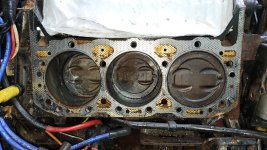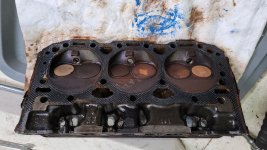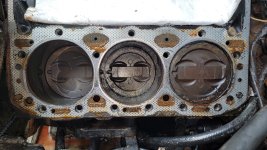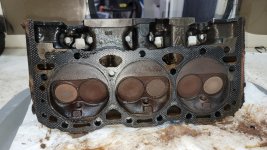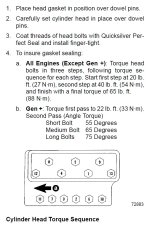Scott06
Admiral
- Joined
- Apr 20, 2014
- Messages
- 7,324
Rust in severalWell I did the acetone test on the exhaust manifolds and they were okay. I'm definitely going to have to replace them at some point though as the rust is getting pretty bad. I tried to do a pressure test on the block but I couldn't get the right parts to get a good seal to pressurize it. I am pretty confident that it's fine though as, like I've said before, It's closed cooled and I had it wrapped in heat trace every winter.
Here's a shot of the Port side after the exhaust manifold was removed. #4 Cylinder is definitely wet.
View attachment 398469
This video gives a better look: VIDEO
Here's the Starboard side, and the #3 Cylinder is also wet.
View attachment 398470
Starboard side video: VIDEO
I next pulled the intake...
View attachment 398471
Here's a better video of the intake sides and valley: VIDEO
One more shot of the underside of the Intake:
View attachment 398472
And subsequent video: VIDEO
Anyway, I will be doing a leak down test in the next few days (now that the tool arrived), and then go from there. So what do you guys think? Anything obvious!
Exhaust ports is sign water is getting into exhaust
May be from head cracks
Or exhaust system leaks
Is there a crack in bottom of intake thermostat housing ?




















